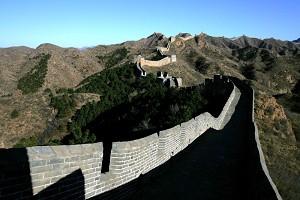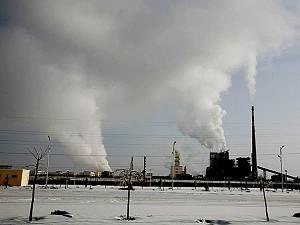The Ejina Oasis, one of the most important ecological defense lines in Northwest China, is disappearing. If the oasis disappears, much larger sandstorms will go through Northern China and head southward to the Yangtze River Valley.
The Ejina Oasis, also known as the Juyan Oasis, is in the western part of the Inner Mongolia Autonomous Region and encompasses a total area of up to 114,600 square kilometers. The oasis is watered by the Heihe River originating from Qilian Mountain. The Heihe River is called the Ejin River after it enters the region of Inner Mongolia.
The Inner Mongolia Autonomous Regional Meteorological Bureau has been monitoring and analyzing the ecological environments of the eastern rim and the Ejina Oasis for years. Its analysis shows that the Ejina Oasis is facing a serious ecological crisis.
Ba Te, director of the Inner Mongolia Ecology and Agro-climatic Center and the principal engineer of the project, said that the data shows the Ejina Oasis’ lush vegetation area has reduced from 276.3 square kilometers to 5.7 square kilometers, a 97.9 percent decrease.
Over the last decade, the vegetation area has decreased 2.8 square kilometers annually and the woods by the river have decreased an average of 9 square kilometers every year.
Sparse grasslands and desert have increased by an average of 3.8 and 2.9 square kilometers respectively every year.
“The worsening ecological environment is caused by various reasons. The warming weather causes the Qilian Mountains’ glaciers to melt faster. There is more evaporation which results in the shortage of water supply to the oasis,” said Ba Te.
Ba thought, however, that people are the main reason the environment is degrading. As population and livestock are increasing, the use of local river water resources is substantially increased, resulting in a sharp decline of water downstream. So less and less water is flowing from the Heihe River into the oasis.
According to Ba, Ejina’s raising of livestock is overdeveloped for the region. There are too many people, herds, and farms, and people cut trees at will. All of these concerns have contributed to a growing ecological crisis in the Ejina Oasis.
Ba stressed that if measures for further protection of the ecological environment are not taken soon, it will cause serious disasters to people living in the area as well as threaten the ecological environment and economic development nearby.
Ba pointed out that if the natural defense line of the Ejina Oasis is gone, the sand flow will connect from the west side—Xinjiang, to the east—the desert and loess area of the middle reaches of Yellow River Huge sandstorms will go straight through North China and head southward to the Yangtze River Valley. It will directly endanger Dongfeng Aerospace City and destroy the agriculture of the Hexi Corridor.




